Chapter 1 The Sorting Table and the Big Bag
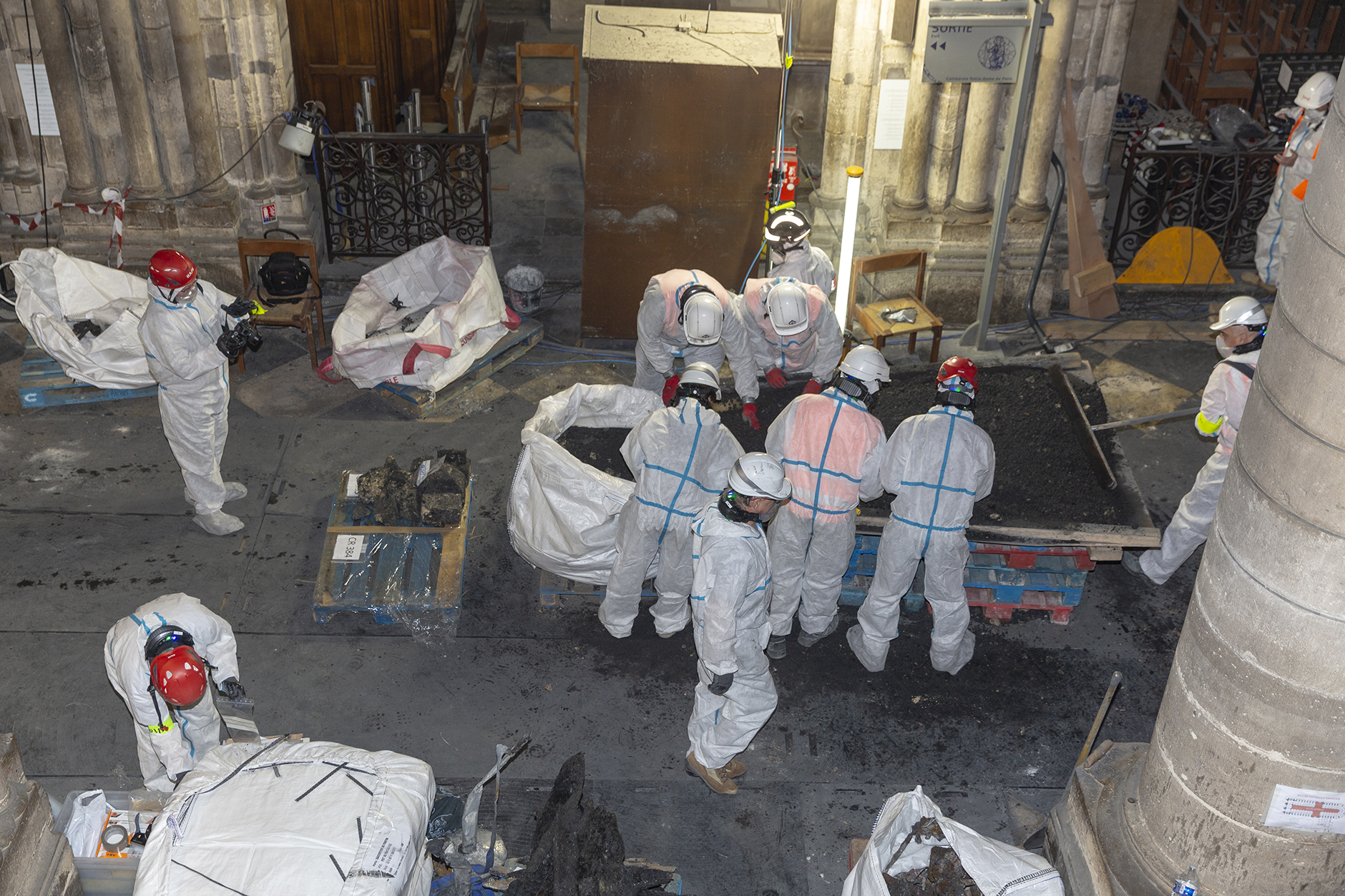
The teams around the sorting table in the cathedral: selection and photographic documentation of the remains © Alexis Komenda, C2RMF, mai 2019.

Handling and inventory of lapidary remains in the barnums. © Alexis Komenda, C2RMF, juin 2020.

Sorting of collapsed materials on the vaults in the barnums © Alexis Komenda, C2RMF, juin 2020.
Dorothée Chaoui-Derieux
Immediately after the Notre-Dame fire, teams from the Ministry of Culture (i.e. the regional archaeology department, the research laboratory of the historical monuments and the research and restoration center of the museums of France), with the occasional help from other scientific institutions, implemented a protocol for sorting and sampling the materials that had collapsed to the ground and onto the vaults. In order to identify the elements to be preserved among the heaps of rubble, the scientists work around a makeshift sorting table (a wooden board placed on simple pallets). A remote-controlled machine deposits all the materials recovered from the ground onto this table, bucket-load after bucket-load. Under the close scrutiny and expert hands of specialists and archaeologists, each fragment acquires new meaning as either vestige or waste according to its state of conservation, its informative potential, and its heritage and scientific ‘value’. The sorting table is set up not at the level of the crossing but in the north aisle of the nave, where it temporarily replaces an altar. In this period of urgency, the sorting table gathers around it all the ‘celebrants’ and thus allows certain bits of rubble to be consecrated as valuable remains.
This protocol that had been established for sorting and classifying the collapsed materials on the ground is reproduced and adapted to deal with the materials resting on the vaults. The materials are collected by technicians who access the vaults with ropes, and then they are assesses by the same teams on the sorting table, which was moved for this purpose to the marquees located on the square in front of the cathedral.
In this ‘second cathedral’ made of tarpaulin, there are no tourists or churchgoers, but only the faithful sorters who receive dozens of big bags daily, testifying to the flawless collaboration between technicians accessing the materials on the vaults by rope and the scientists on the ground. Their meticulous and integral excavation has allowed the discovery and selection of new remains.
Chapter 2 An Archaeological Pedagogy
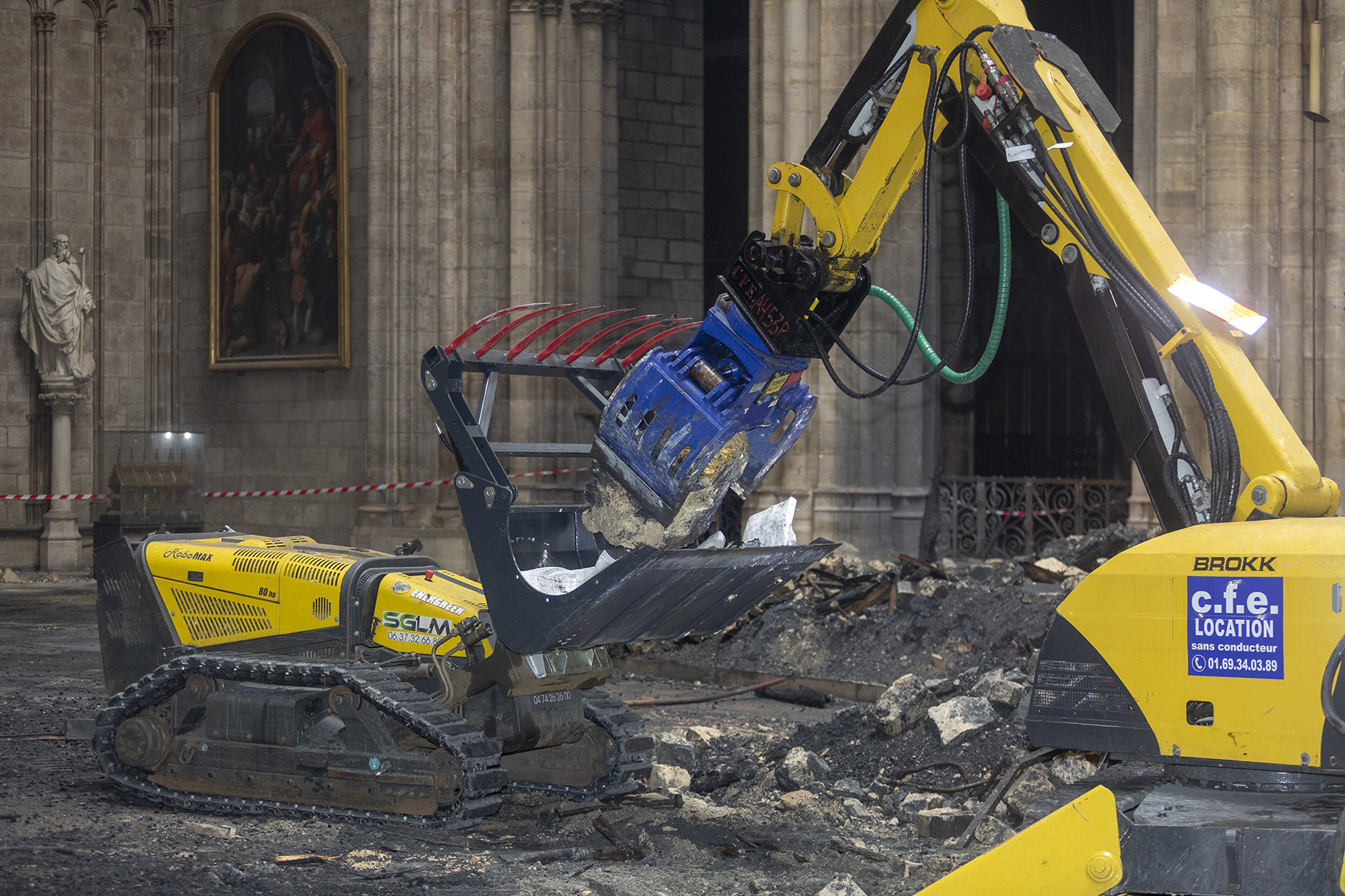
Removal of the remains by a remote-controlled machine at the transept crossing. © Alexis Komenda, C2RMF, mai 2019.
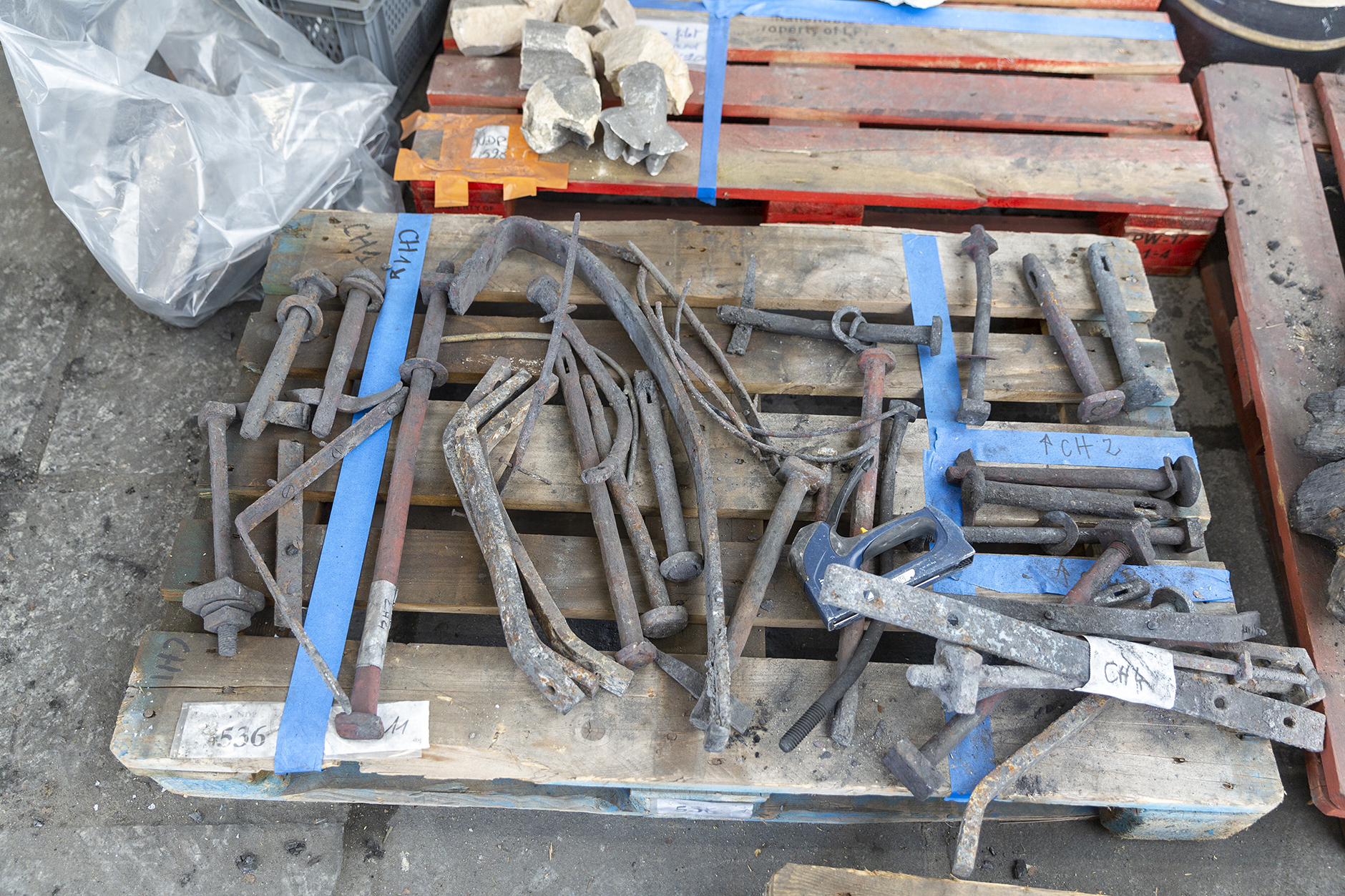
Isolated metal remains on a pallet. © Alexis Komenda, C2RMF, juin 2020.

Removal of the remains by the rope access technicians on the vaults. © Alexis Komenda, C2RMF, février 2021.
Dorothée Chaoui-Derieux
There is not always immediate consensus among the “compagnons”* of the restauration site on what constitutes vestige, especially when the materials are embedded in tangled heaps that must be removed as quickly as possible in order to secure the building. And, since it is not possible to access the remnants directly, the scientists must delegate their removal to site workers. On the ground, the remote-controlled machine operators learn how to delicately handle the tongs and the bucket in order to extract elements of the wooden framework, which is sometimes still fused together, and polychrome stone blocks. On the vaults, the rope workers learn to distinguish the metal elements that had come from the spire and the framework from those from the scorched scaffolding. Around the sorting table, under the marquees the stonemasons assigned to the task of sorting become experts in the art of discovering the nails handmade in the Middle Ages, and the various material specialists engage in exchange in order to make the sorting and the samples evolve.
Two years after the fire, there is no longer any question of talk among the workers about ‘rubble’ or ‘debris’: the methods for examining the remains vestiges have been patiently taught by the scientists and fully appropriated by those who had to train their eyes or hands for the task. The care taken by all actors at the building site in handling and conserving of the cathedral’s ‘remains’ inspires belief in miracles.
*In French, the term “compagnons” designates workers in the construction sector who have received a very high level of training. In November 2010, the Compagnonnage was inscribed on UNESCO's Representative List of Intangible Cultural Heritage as a "network for the transmission of knowledge and identity through the craft".
Chapter 3 From the Construction Site to the Laboratory
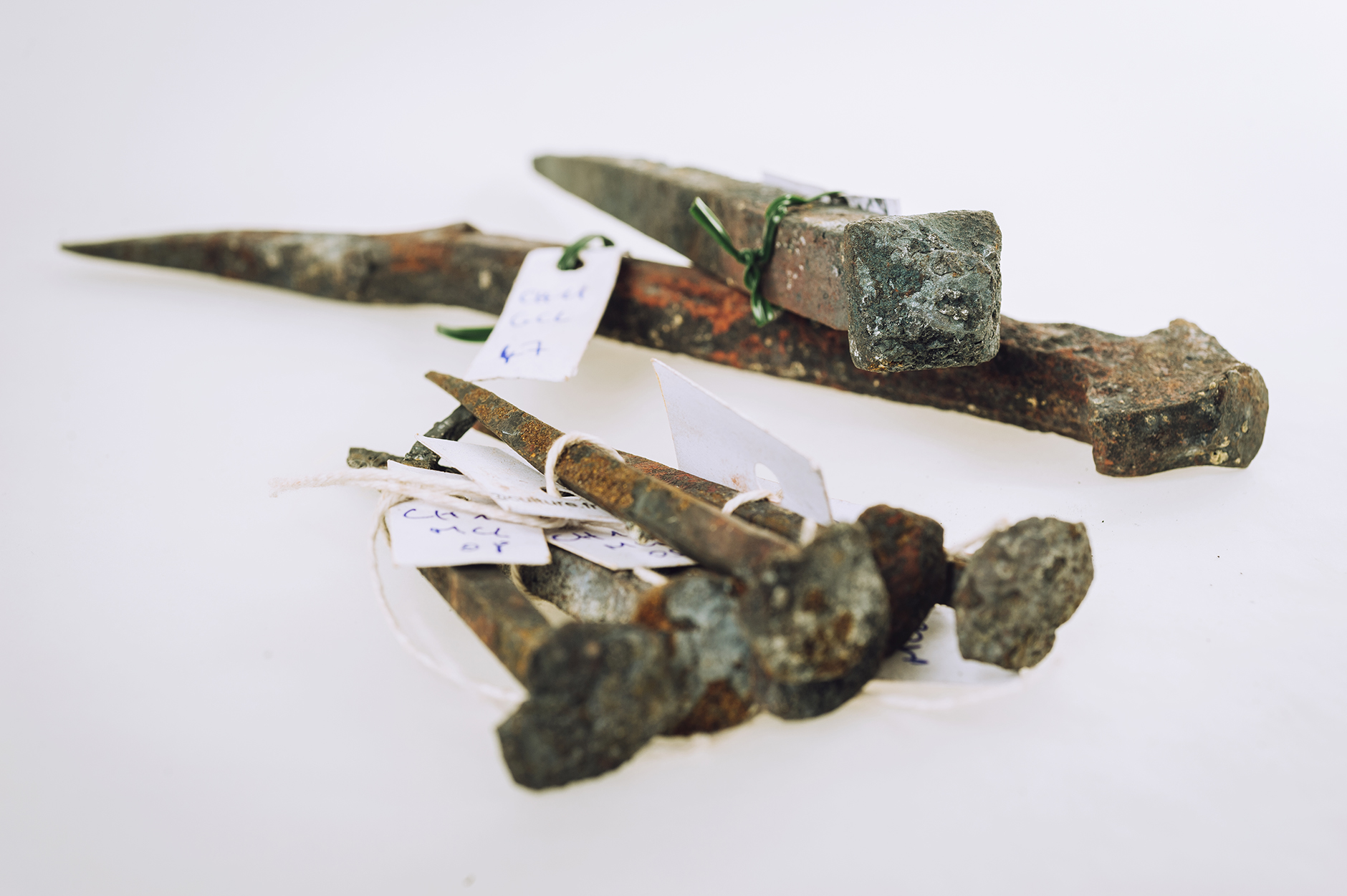
Nails from the choir frame of Notre-Dame de Paris. © Cyril FRESILLON / IRAMAT / NIMBE / ArScAn / CEA / Chantier Scientifique Notre-Dame de Paris / Ministère de la culture / CNRS, 2021.
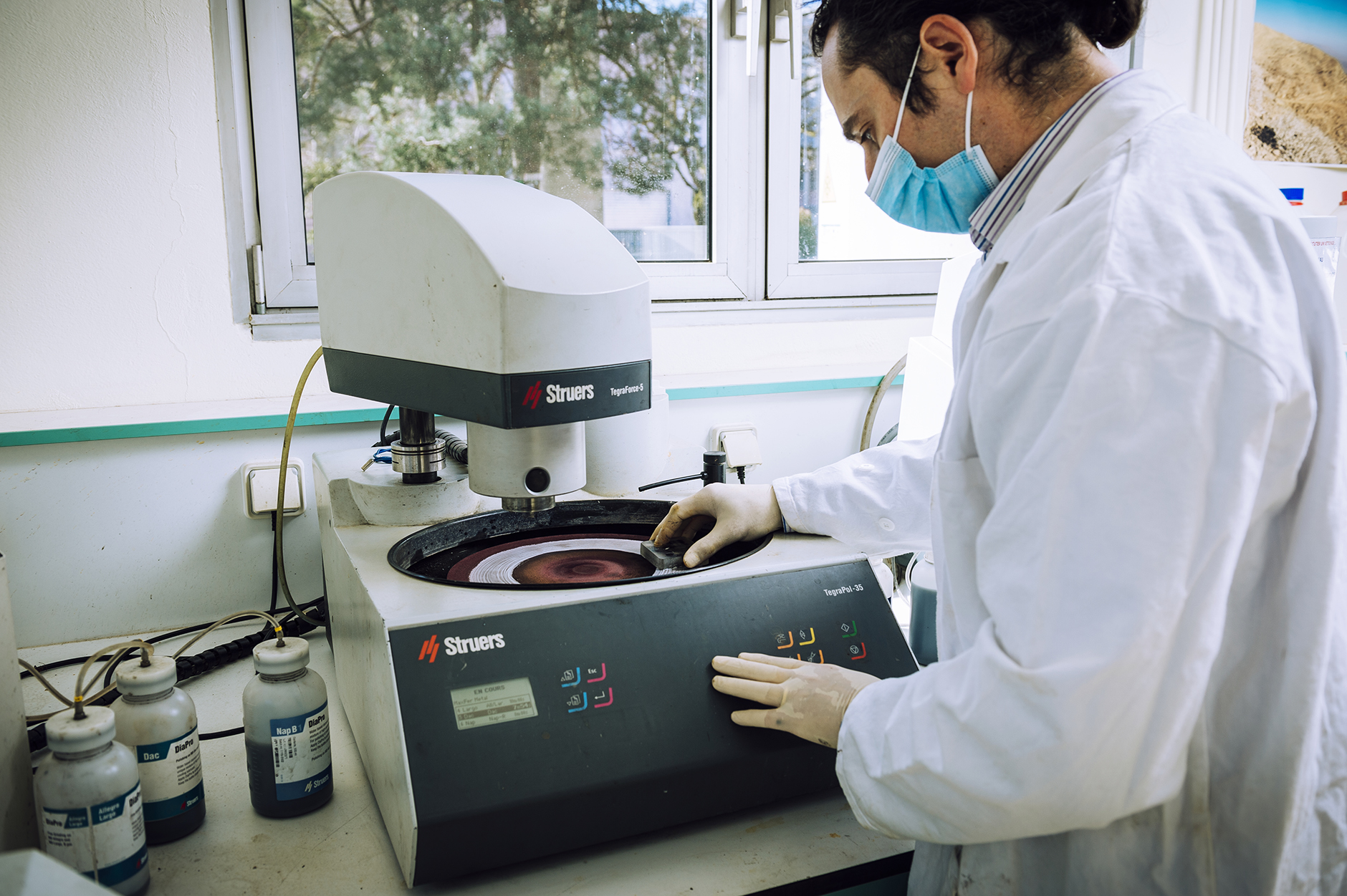
Polishing a metal sample from the Notre-Dame de Paris construction site. © Cyril FRESILLON / IRAMAT / NIMBE / ArScAn / CEA / Chantier Scientifique Notre-Dame de Paris / Ministère de la culture / CNRS, 2021.
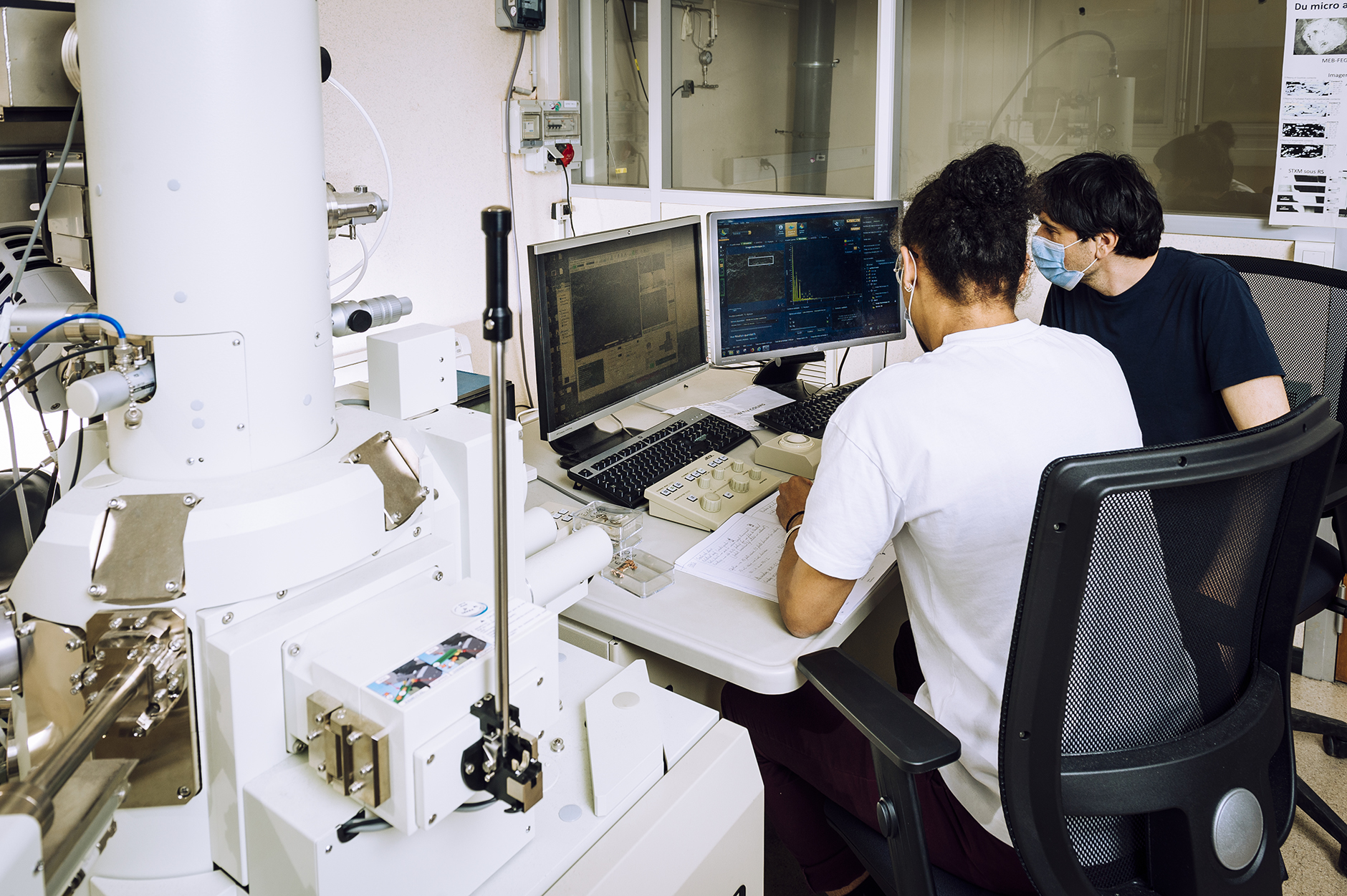
Scanning electron microscope (SEM) observation of metal samples from the Notre-Dame de Paris construction site. © Cyril FRESILLON / IRAMAT / NIMBE / ArScAn / CEA / Chantier Scientifique Notre-Dame de Paris / Ministère de la culture / CNRS, 2021.
Maxime L'Héritier, Aurelia Azéma, Delphine Sylvilay
The study of materials involves a long chain of operations that begins on the site of securing and restoration itself. Sorting through the remains of the fire, whether on the ground, on the vaults or on the sorting table, has an impact on conditions for future research. These exhumed remnants also have a relation to the building materials that are still in place and they guide the researchers towards complementary observations in the various parts of the cathedral. In The sorting process and the successive surveys and inventories of materials are fundamental to create typologies. They underlay the rationale to distinguish what constitutes archeological artefacts from the rubble and to select what will be analyzed or not. Questions are posed: Is the analysis of molten lead relevant? What do studies of pieces of charcoal contribute and how should they be inventoried? What samples should be taken from a fragment of mortar or an iron staple? Only those things that are known or recognized can be analyzed in an appropriate manner. If the archaeologist or art historian are aware of the potential in studying a particular stone, piece of mortar or fragment of iron, then the archaeologist, the geologist or the chemist can make the materials speak, and know how to orientate the inventory and the necessary samples.
The study of materials is a continuous chain: The results of physical and chemical analyses provide clues to the quality of a mortar or to the composition of certain lead-work. But, above all, they invite us to pose questions about the choices made by the builders; the continuities, breaks and transitions between the different construction phases, or the marks of subsequent repairs. Very often, a return to the field site is essential for completing observations, for comparing and contrasting the results between materials, and for taking new samples that will confirm (or not) an initial hypotheses. The vital dialogue that unfolds between different specialists nourishes the research. The dialogue is characterized by a back-and-forth exchange around a set of driving questions and the partial or more definitive answers that arise, as well as between the laboratory and the building site, which are inseparable as places of heritage research.
